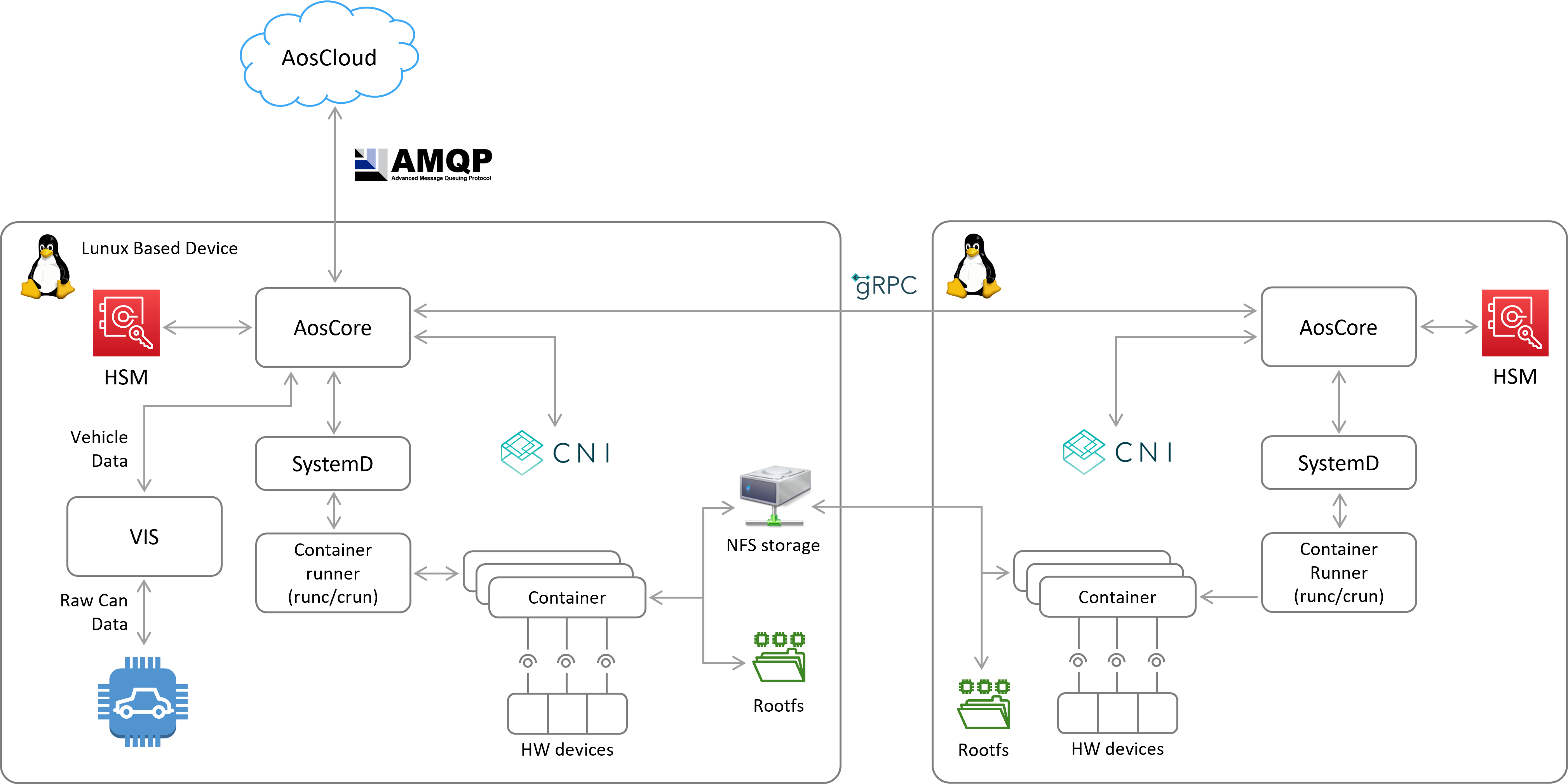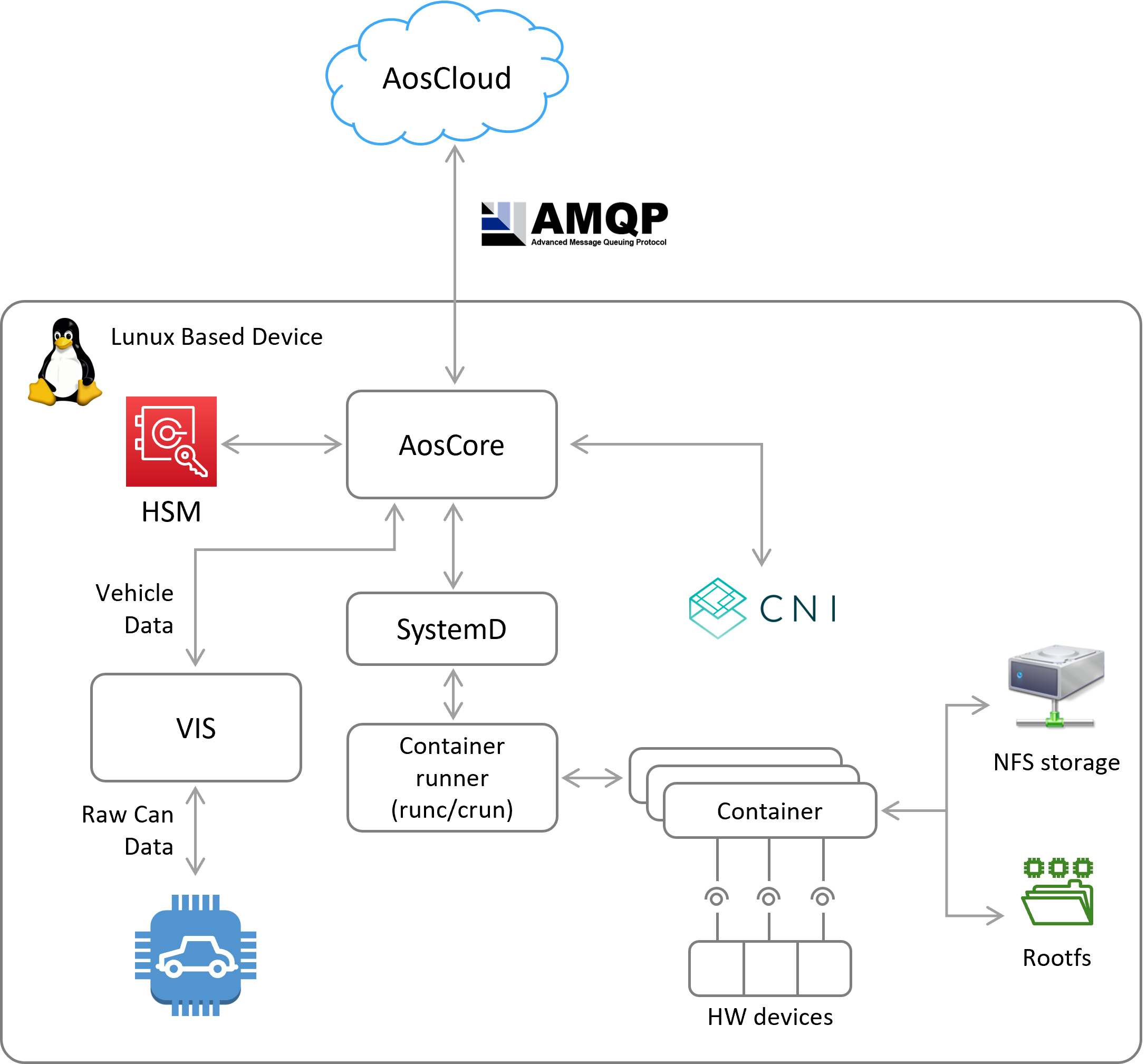Supported AosCore blueprints

AosEdge supports different models of connected devices. The connected device could have one node or multi-node architecture.
Node - is a physical device or virtual machine that is operable by AosCore component.


The diagram illustrates the fundamental interaction among system components within the node.
AosCore: This is the essential component of the onboard logic within the AosEdge platform. It establishes communication with AosCloud and carries out tasks such as container management, FOAT updates, and certificate management.
A Hardware Security Module (HSM): This is a secure element utilized to store private keys for communication between the AosCore component and for secure mTSL communication with the cloud.
The diagram illustrates the fundamental interaction among system components within the node.: These tools are employed to oversee the runtime environment of OCI containers.
Vehicle Information Service (VIS): Service responsible for providing vehicle data via W3C VISS protocol.
Container Network Interface (CNI): Used to configure network interfaces for container communication.
Container: This is an OCI container with a user service(application).
In order to achieve a lightweight container, the host's root filesystem is utilized as the foundational layer for constructing its own file system.
Communication between nodes is established via the gRPC protocol. Mutual TLS is used to make a secure connection for node communication. Certificates and keys are generated while the provisioning procedure. Node blueprint with Xen hypervisor
AosEdge platform support connected devices that are operably by Xen hypervisor.
Node with Xen could contain at least two domains:
Dom0: is a privileged domain that starts first. It uses RTOS Zephyr.
DomD: User domain that is operable with Linux OS.
The key feature of the Node that is using Xen is the functionality that runs services as unikernel virtual machines.